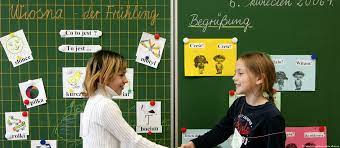European Day of Languages: Celebrating diversity

Brussels: Imagine standing at a bus or train station and a stranger asks you a question in a foreign language, a desperate, questioning look on their face. They do not appear to be begging for money. Instead, they are searching for something. Harbor, perhaps? Travel options? Most open-hearted, sympathetic people would be inclined to help.
In the past, people who could not communicate if they didn’t share a language had to rely on facial and hand gestures. And that often — magically — worked.
Nowadays, we have language apps on smartphones that can convey a translation from one language to another in a matter of seconds. “How do I get from A to B?” Again, it’s magic.

But then, the human interaction can easily go missing.
Does a translation suffice in a broader context? Is it enough to promote intercultural understanding?
A brainchild of the Strasbourg-based Council of Europe — in conjunction with the European Commission, September 26’s European Day of Languages aims to encourage the some 700 million Europeans represented in the Council of Europe’s 46 member states to “discover more languages at any age,” according to the European Day of Languages website.
The Council of Europe is an international organization established after World War II to advocate human rights, democracy and the rule of law in Europe.
Celebrated since 2001, the European Day of Languages stems from the Council’s conviction that “linguistic diversity is a tool for achieving greater intercultural understanding and a key element in the rich cultural heritage of our continent.”
“Everybody deserves the chance to benefit from the cultural and economic advantages language skills can bring. Learning languages also helps to develop tolerance and understanding between people from different linguistic and cultural backgrounds,” declared the Secretary General of the Council of Europe and the European Commissioner for Education and Culture in a joint statement at the launch of the European Year of Languages at the time.
According to the European Day of Languages site, here are some fun facts:
- There are between 6,000 and 7,000 languages in the world, spoken by over seven billion people divided into over 190 independent states.
- There are about 225 indigenous languages in Europe, roughly 3% of the world’s total.
- Most of the world’s languages are spoken in Asia and Africa .
- At least half of the world’s population are bilingual or plurilingual, i.e. they speak two or more languages.
- In their daily lives, Europeans increasingly come across foreign languages. “There is a need to generate a greater interest in languages among European citizens.”
Interestingly, the site notes that “bilingualism brings with it many benefits: It makes the learning of additional languages easier, enhances the thinking process and fosters contacts with other people and their cultures.”
Meet the Germans is back: Shabnam takes over!
On the other hand, across the pond in the US, there was the early September 2023 announcement that West Virginia University in the US would slash its entire foreign languages department. Sure, it’s not Harvard University, but it’s a clear sign that follows suit among US American universities and European institutions alike who are chopping their foreign language and cultural programs.
Citing major budget shortfalls projected for the next few years, the Associated Press noted that: “West Virginia University is proposing cutting 32 programs including its … entire department of world languages, literatures and linguistics, along with graduate and doctoral degrees in math, music, English and more.”
Furthermore, Associated Press noted, other US universities and colleges have faced similar decisions, but “this is one of the most extreme examples of a flagship university turning to such dramatic cuts, particularly when it comes to foreign languages.”
“In an increasingly global world, Americans should be adding, not slashing, opportunities for their children to learn another tongue,” said Benedicte de Montlaur, cultural counselor of the French Embassy in the United States, in an op-ed in The New York Times in 2019.
According to the Berlitz language-learning portal in September 2023, some 135 million people around the world speak German as their mother tongue or functional second language, and it ranks 12th as the most spoken language in the world, after English, Mandarin, Hindi, Spanish, French and Arabic, among others.
It is estimated that the 20 most common languages are spoken by around 50% of the world’s population.
Meanwhile, the majority of all other languages are spoken by a small group of people only, making them endangered. In Germany, dialects such as North Frisian and Saterland Frisian, as well as Upper Sorbian and Lower Sorbian, are under threat. They are among the country’s recognized minority languages, which are protected by the European Charter for Regional or Minority Languages. The list also includes Romani, spoken by a minority across Germany, and Danish, in use in Schleswig-Holstein.
There are also many other immigrant languages spoken by sizable communities throughout the country.
Ambassador of the European Union Dr Riina Kionka congratulated all amid the celebrations.





